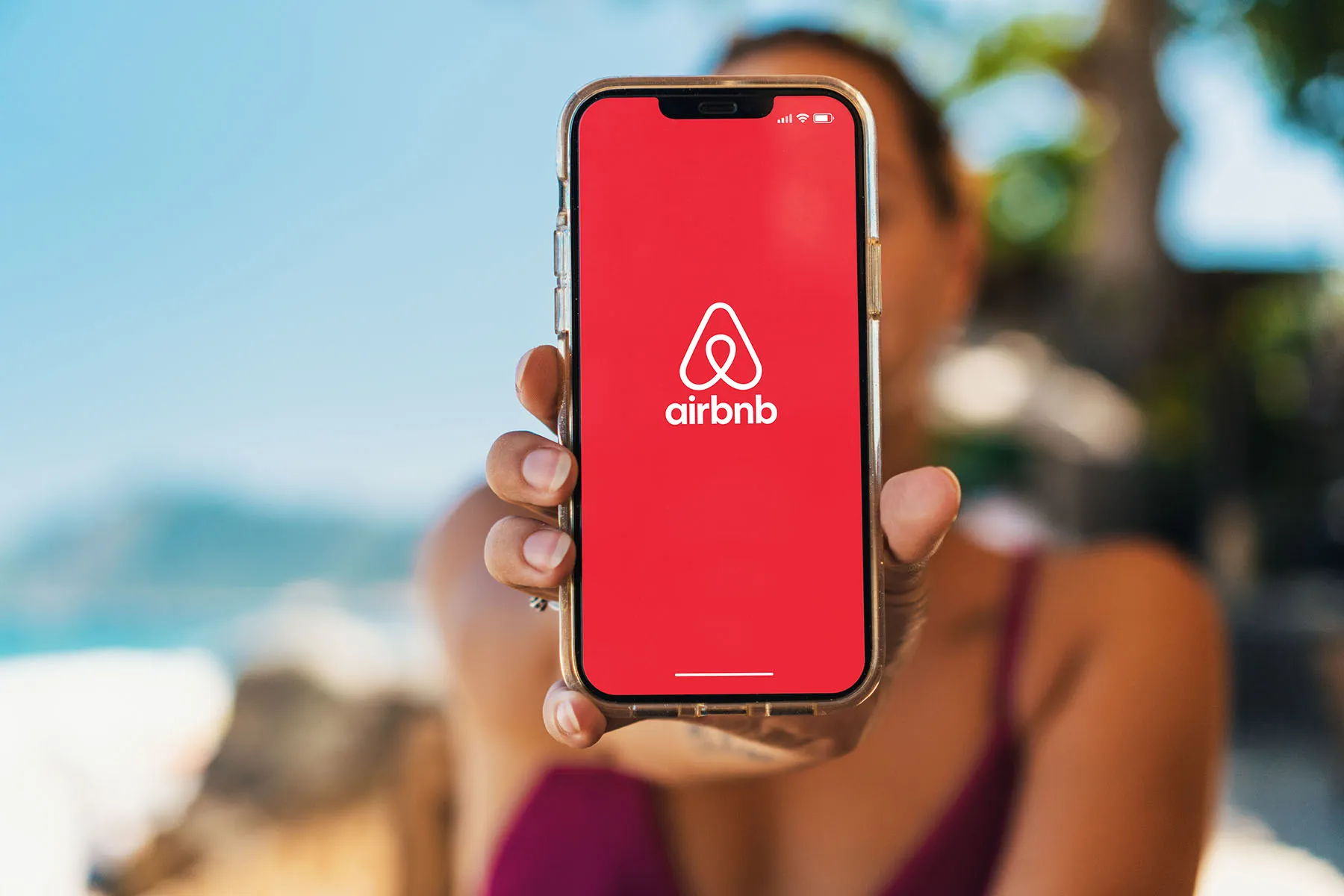Travel Blogs Rode Credit Card Referrals Wave: What Comes Next?

Skift Take
In the past decade, some travel bloggers became millionaires — sometimes several times over — by publishing breezy posts about world travels, complete with detailed reviews of business class seats and hotel rooms suites. Now that business is in peril, and it's not clear when, or if, it will return.
No one caught the points trend quite like Brian Kelly — you know him as The Points Guy — who began writing about travel while working at Morgan Stanley about a dozen years ago. What started as a hobby soon became a profession, with Kelly selling Americans on how they could use points to take "free" vacations.
A few years later, he sold his company to Bankrate, for an estimated $20 million, according to Business Insider. He's still CEO, but along the way morphed into something of a points celebrity, popping up on the network morning shows and Live with Kelly and Ryan to talk about deals, and in the business press to discuss airline earnings.
To the uninitiated, Kelly’s site appears to sell aspirational travel, like a typical influencer. But The Points Guy has been much more profitable than a business that takes kickbacks on hotel stays. The Points Guy, and other blogs like it, hawk credit cards, persuading consumers they can take a once-in-a-life-time vacation by applying for the right card. In better times, insiders say a credit card company could pay between $35 to $500 for a single card approval processed through a big website. Card companies pay bounties because global luxury travelers long have been top customers.
Not anymore. Bloggers don't like to speak publicly about their relationships with card companies, because terms are confidential. But speaking anonymously, they said some card companies, including American Express and Capital One, almost entirely have pulled referral fees. Others, including Chase, still have paid them, but only for personal cards, not business ones, a source said.
It's hard to blame them. Even if card companies resumed payments, would consumers want a new Amex? Often, people apply because they are considering a specific trip, but who can dream of Bora Bora now?
"We are in the business of travel credit cards, especially premium travel cards, and no one is traveling," Kelly said July 16 at Skift's Loyalty Summit. "There's not a lot of consumer demand for new credit cards, and certainly not an appetite from the credit card companies."
With business so slow, The Points Guy has transferred employees to other websites owned by its parent company, Red Ventures.
Others report similar troubles. One prominent blogger, who did not wish to be identified so as not to comprise relationships with card companies, said referral revenue is down roughly 90 percent compared to pre-pandemic. Another, Gilbert Ott, who runs God Save The Points, said his card referral business is off about 70 percent.
Referral revenue never was big part of Ott's revenue stream, and he said he does not have the same tight relationships with card companies as competitors. Still, he said margins on his limited card referral business were huge.
“It's so incredibly lucrative that no blogger who wants to stay in their living can really turn it away,” Ott said. Now, he said, that money is basically gone.
"It’s a real doomsday scenario.”
A Great Decade
The Points Guy might be the only brand to break through the travel niche and become a household name, but many others command huge audiences, with readers trusting them for the latest flight reviews, airline news, and credit card offers. Popular ones include View From The Wing, One Mile at a Time, and Million Mile Secrets.
These bloggers seem like geniuses now, especially the newly-mined millionaires. But much of what led to their success happened outside their control.
It started a little more than a decade ago, as struggling U.S. airlines sought to increase cash flow by investing in loyalty programs. They didn't want to win more flyers so much as they sought to attract new credit card holders. They wanted the high-margin revenue.
This business is fanatically lucrative for airlines, because the card companies pay airlines for each mile, sometimes as much as 2 cents per point. In a recent filing, United Airlines, which values its MileageP;us program at about $22 billion, reported it earned $3.8 billion last year by selling miles to third parties, including credit card companies. The mileage programs have liabilities too — they need to make-good on that free travel — but the cost of providing "free" flights is a fraction of the revenue they make from mileage sales.
For airlines, co-branded cards have the best economics, and United would rather consumers hold a card with its logo on it, rather than, say, a Chase-branded card. But airlines can make money even on non-branded cards. When a consumer transfers points earned from Chase Sapphire Reserve card to United, the bank pays the airline.
“It’s a post-Great Recession thing,” Andrew Watterson, Southwest’s Chief Commercial Officer, told Skift in 2018. “Even before then, it was interesting, but I think as the economy strengthened and the airlines went through the re-negotiations with the banks, it got to the point of critical mass.”
When this business started ramping up, airlines and banks needed fresh distribution channels for a new era. Many retained direct mail offers and some even asked flight attendants to make announcements to drum of business, sometimes offering employees $50 for a successful referral. But nothing compared to the blogs, particularly when it came to attracting younger, wealthier, travel-minded consumers.
“The Points Guy was looking at fees of something was north of $300 per person per card,” Ott said. “To the best of my knowledge, I think that was out there for other people in the market as well. And so when you're thinking about that with, up to millions of readers per month, even if you're getting just a small slice of that, it's a shockingly good business.”
Despite the close relationship among blogs, card companies and travel brands, consumers generally have trusted the most-read bloggers, who could make or break airline loyalty programs. Some received criticism for cozying up too much to card companies or airlines, but others remain fiercely independent. A few write harshly critical stories when they believe an airline takes an anti-consumer position.
When Sun County Airlines revamped its loyalty scheme two years ago and unveiled changes to its credit card, Brian Davis, the airline chief marketing officer, reached out to the biggest bloggers ahead of time to gauge how they would react. Sun Country is among the smaller U.S. airlines, but even it cared about the blogs. If they panned the relaunch, Davis knew, the airline could be in trouble.
"We said, 'if we were to launch this program, is this a program that you would feel comfortable advocating to your customers?"' Davis said. "Their voices can move the needle. We were very much aware of several of the opinion-makers out there and part of the engagement strategy was to avoid any negative feedback from them."
Mark Nasr, vice president of Air Canada’s loyalty program, is going through a similar exercise now. His program, Aeroplan, relaunches soon, and on Day 1, most of the prominent bloggers will know everything about it. Nasr wokrs closely with them.
“The bloggers do a fantastic job of actually promoting the product of travel,” Nasr said. "Most of the bloggers talk about their own travel experiences — places they've gone things they've seen, experiences they've had. It's a way of modernizing the old travel pages of the newspapers and some very boutique niche magazines that once were very powerful.”
Will It Come Back?
Those newspaper travel sections and glossy magazines once had tremendous sway over the travel industry. But now, most are irrelevant.
Points bloggers could suffer the same fate. Perhaps the world will move on. Today, several bloggers say, people are more interested in cash-back credit cards, which provide small rebates to consumers, and even smaller referral fees to bloggers.
Still, Davis and Nasr said they expect the travel credit card ecosystem will return with vigor when air travel begins to recover. And both said they expect bloggers, provided they can still in business, will play a part in that recovery.
There's almost no question the travel card business itself will come back. It has to, because airlines cannot walk away from that revenue. What business wouldn't want to invest in an asset it can create out of thin air and sell 2 cents each? Without credit card revenue, many airlines could not survive.
When airlines and card companies again get serious about sign-ups, Davis said, consumers likely will still need someone to guide them about how they can take the trip they want. And he predicted some of today's bloggers likely will occupy that market niche when the business comes back.
"There is a place for people who act as an advisor to consumers," Davis said. "At this moment in time, people are probably not asking the same type of questions about, 'How do I want to take a vacation in three months, and what's the fastest way to get there?' But I think the fundamentals of what made that service valuable will come back. I think there's every reason to believe we will return to that environment."
Consumers may want it to come back. It won't happen soon, since so few people are traveling, and airlines and banks are in cost-cutting mode. But throughout every industry cycle for the past 40 years, travel cards have stayed strong, because they hold an ineffable power over consumers. People love the idea of racking up points for a flight to Hawaii (how exotic!) much more than they want a $2 rebate on a $100 purchase.
“Of all the different type of cards that you would have in your wallet, the one that gets you most excited is the one that gets you daydreaming about all the wonderful things you could be doing,” Davis said. “If you offer me two cards, one that gets me gas, and one that gets me a vacation, I want the vacation. The gas I have to get anyways. The programs that get people daydreaming are the cards that get to the top of the wallet.”
To be sure, the blog business in 2022 won't be the same as in 2019. But some bloggers say they noticed a shift before the Covid-19 pandemic, with the business already going through a natural evolution.
After the excitement of 2010-15 turned some bloggers into millionaires, larger brands started getting into the game, hoping to siphon some revenue. CNBC and and Business Insider started hawking credit cards, while Wirecutter, a website owned by the New York Times, occasionally published links.
"It will come back, but I would flag that it was different before the pandemic,” the prominent blogger said. "Credit card affiliate revenue has not seen the peaks of where it was a couple of years ago. That is because there are more people in this game, and more sites, even CNBC. There are all kinds of major brands doing credit cards now. It is very saturated."




